Background
More than 50 percent of pressure injuries (PIs) occurring in the pediatric and neonatal population are directly related to medical devices.1 Skin integrity alteration in the pediatric population causes physical pain for the child, mental anguish for the parents, and increased cost to healthcare institutions.2
Identified recurrent pediatric impaired skin integrity at a Magnet-designated children’s hospital became the focus for this guideline development initiative. In most healthcare institutions, pediatric treatment and prevention guidelines are adapted from adult practices.2 These practices raise concern for the safety, cost-effectiveness, and clinical efficacy due to the anatomic and physiological differences between the two populations.2
Methods
Guideline development and implementation included:
- Assessing the at-risk patient: Braden Q Score, Neonatal Skin Condition Score, and/or Neonatal Abstinence Syndrome (NAS) Score
- Determining support surface availability and choosing support surface functionality to provide microclimate management with pressure redistribution
- Other factors included: spinal stability, patient mobility, paralytics/ vasopressors, and respiratory support
- Based on the assessment and patient weight, provider was guided to select the proper low air loss (LAL) support surface fitted for the appropriate crib, pediatric frame, or cardiac surgical platform
Results/Outcomes
Retrospective chart review for three patients with the use of LAL; in each of the cases the patient healing was evident within the first 10 days of use. After LAL was initiated, additional skin breakdown did not occur during the patients’ hospitalization.
Patient 1
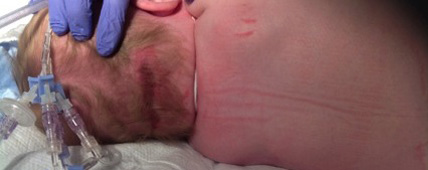
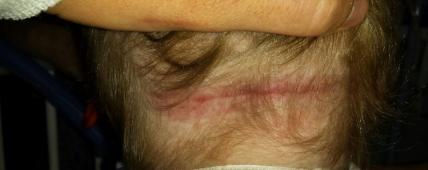
10-month-old male, lower occipital DTI found 9-days post op from neonatal positioning device.
Treatment Plan: Powered LAL on Pulsation mode, silver foam dressing, repositioning every two hours.
Results: 34-days post op, DTI resolved. Patient remained hospitalized another 117 days on same support surface without additional PI development.
Patient 2
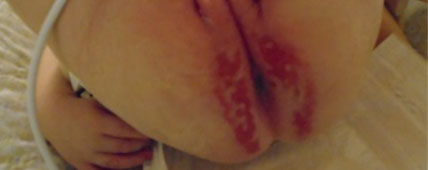
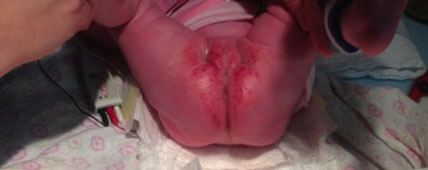
4-month old female, severe perianal dermatitis.
Treatment Plan: Powered LAL on Static mode, Ph-neutral soap and saline, hydrophilic cream, repositioning every two hours.
Results: improved dermatitis, visible scarring remains. Patient remained hospitalized another 42 days on same support surface without additional moisture-related breakdown or PI development.
Patient 3
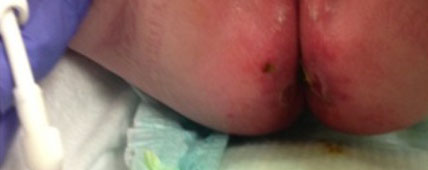
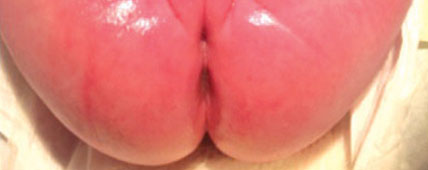
3-week old female, history of NAS, MRSA colonization, and severe perianal dermatitis.
Treatment Plan: Powered LAL on Pulsation mode, Ph-neutral soap and saline, hydrophilic cream, repositioning every two hours.
Results: dermatitis resolved in eight days, infant sleeping better on LAL surface.
Conclusion
The LAL guideline provides early identification of the at-risk pediatric population. Early identification and surface initiation mitigates the causative factors.

